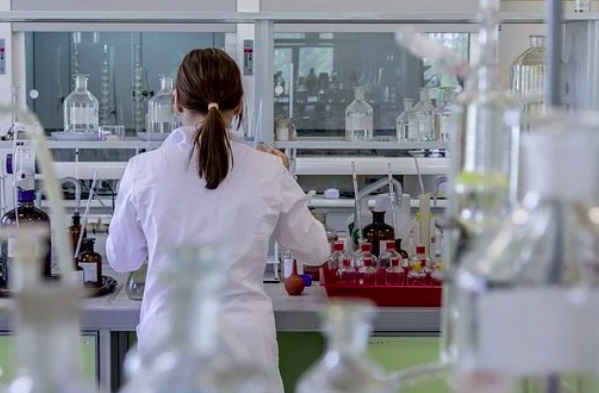5 Things to Know About the Usage of Spectrometric Biosensors
While a broad range of analytical tools can be employed in such procedures, biosensors are increasingly becoming a popular tool used in many applications.
The best part about them is that most biosensors are portable and easy to use. Moreover, they also have a high degree of specificity and sensitivity compared to their traditional alternatives, thus reducing the error margin in biological experiments. Spectrometric biosensors are a good example of biosensors that are increasingly gaining popularity these days in the said applications. Below is a brief overview of five things you should know about spectrometric biosensors and their usage.
 Picture 1 of 5 Things to Know About the Usage of Spectrometric Biosensors
Picture 1 of 5 Things to Know About the Usage of Spectrometric Biosensors
1. They Utilize Spectrometry
By definition, the general study of how matter interacts with electromagnetic waves is referred to as spectrometry. On the other hand, spectrophotometry refers to the quantitative measurement of light spectra, intensity, and how light behaves as it passes through a material or sample of interest. Looking at how Spectroscopy is defined, reflection, absorption, and transmission are some of the commonly assessed properties in spectrophotometric analyses. To acquire these measurements, spectrometric biosensors are used. They are a type of optical biosensors, which will be defined later in this article.
2. Various Types of Spectrometric Biosensors
Compared to other types of biosensors, spectrometric biosensors are exceedingly gaining popularity these days. The advancements of spectroscopy and biosensor technologies have seen the birth of a wide range of these biosensors over the past few years. Some of the spectrometric biosensor options available in the industry today include:
- Conventional fluorescence spectroscopy
- Imaging spectrometric biosensors
- Luminescence spectrometric biosensors
- Infrared (IR) spectroscopy biosensors
- Absorption spectroscopy biosensors
- Evanescent wave spectroscopy biosensors
- Fiber optic spectroscopy biosensors
- Raman Spectrometers
- Among others
3. Raman Spectrometers
Among these, Raman Spectrometers are perhaps the most popularly used options in spectrometric analysis. Virtually similar to NIR spectrometers, Raman NIR spectrometers are commonly used in clinical diagnostics. The main difference is that for Raman NIR spectroscopy, the inelastic scattering process is employed while infrared spectroscopy relies on absorption processes. As a result, Raman spectrometers are used to quantify vibrations resulting from polarizability changes, whereas infrared spectrometers measure vibrations resulting from dipole moment changes. Since IR spectroscopy involves high water absorbance, it may not be as ideal as Raman spectroscopy when working with aqueous solutions.
4. They Have Many Applications
As earlier mentioned, spectrometric biosensors are indispensable tools with many applications across industries. Many of them are used in creating assays to help in disease detection, treatment monitoring, and other public health applications. As advancements are seen in biotechnology and microelectronic fields, highly sophisticated biosensor systems are being developed. In most cases, the sample analytes range from organic compounds to gases, ions, and even bacteria. There is ongoing research on how spectrometric biosensors can help detect viral infections like SARS-CoV-2 or COVID-19 from samples. Many of these devices are also utilized in scientific research, academic studies, manufacturing, biomedical research, and industrial research.
 Picture 2 of 5 Things to Know About the Usage of Spectrometric Biosensors
Picture 2 of 5 Things to Know About the Usage of Spectrometric Biosensors
They are especially ideal for use in addressing problems that necessitate speed, high sensitivity, and a high level of accuracy. Developed a few years back, the Mid-IR spectroscopy biosensor is a good example of such a sensor. In a nutshell, some common applications of spectrometric biosensors include:
- Disease screening
- Healthcare monitoring
- Clinical diagnosis and analysis
- Veterinary applications
- Agricultural applications
- Industrial monitoring and processing
- Environmental pollution control
5. Other Types of Biosensors
Apart from spectrometry-based biosensors, there are many other types of biosensors used for various bio-analytical purposes. Along with what they do, some of these include the following:
- Magnetic Biosensors - Used to quantify changes in the magnetic properties of an analyte
- Acoustic Biosensors - They measure changes in the physical properties of a sample
- Thermometric Biosensors - They detect and temperature changes of the solution with the analyte
- Immunosensors - Used for measuring and tracking changes in immunochemical reactions
- Electrochemical Biosensors - They react with an analyte in a sample solution to produce an electrical signal
- Optical Biosensors - Including spectrophotometric and colorimetric variants, these biosensors are typically used in measuring how a biorecognition sensing element interacts with an optical field. Respectively, spectrophotometric and colorimetric biosensors measure light intensity and light adsorption changes.
The field of spectroscopy has advanced greatly over the past few years. The available tools and techniques allow for more accuracy in data gathering and implementation during scientific and biomedical research analysis. The above are just a few things you should know about spectrometric biosensors and their applications.
You should read it
- SARS-CoV-2 virus lives from 4 hours to 3 days in the environment but will be killed in just 1 minute with
- Taking Covid-19 virus image at atomic resolution, scientists discovered its chemical infectious nature
- Scientists discovered the weakness of SARS-CoV-2 virus
- Experts point out two reasons that SARS-CoV-2 is not an 'artificial product', giving advice on how to protect itself.
- How does Covid-19 infect lung cells? Why is it so dangerous?
- How many coronaviruses are there? What gen sars-cov 2?
- Expert: There will be no lifelong immunity to SARS-CoV-2
- 5 differences in the way against the Covid-19 pandemic in Viet Nam were commended by WHO
- The young man drones take his dog for a walk to avoid Covid-19
- How did the world's most powerful supercomputer help science fight the Covid-19 epidemic?
- US President Donald Trump is negative for SARS-CoV-2 virus
- The surveillance firms 'made a profit' during the Covid-19 season
May be interested

Antiferromagnetism: A miracle material that can replace silicon in the field of memory chips

10 Tips for Writing Scientific Papers

Top 10 fastest running dogs in the world

Discover the strange inventions of the last century

Top 10 most modern sniper rifles in the world 2020

Top 10 geniuses with the greatest scientific invention in history





 How to check CPU usage in Windows 11
How to check CPU usage in Windows 11 How to fix GPU usage spike to 100% on Windows
How to fix GPU usage spike to 100% on Windows 5 tips to monitor home network bandwidth usage
5 tips to monitor home network bandwidth usage How to fix the situation where WSAPPX uses high CPU and disk usage
How to fix the situation where WSAPPX uses high CPU and disk usage How to use Instagram for new users
How to use Instagram for new users How to Check Data Usage on AT&T
How to Check Data Usage on AT&T